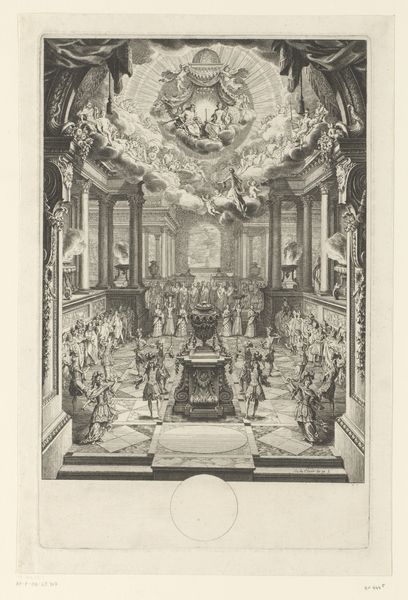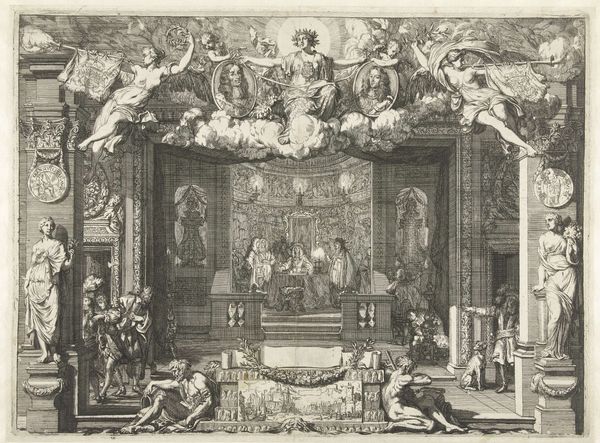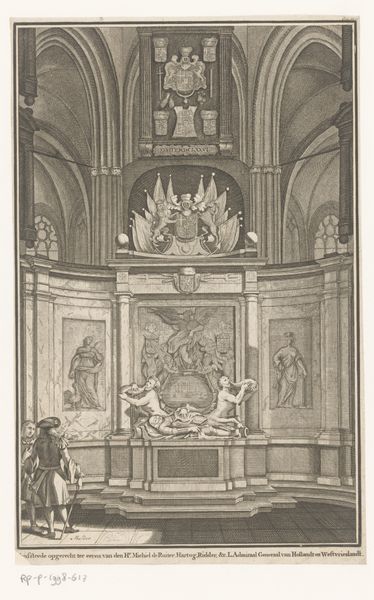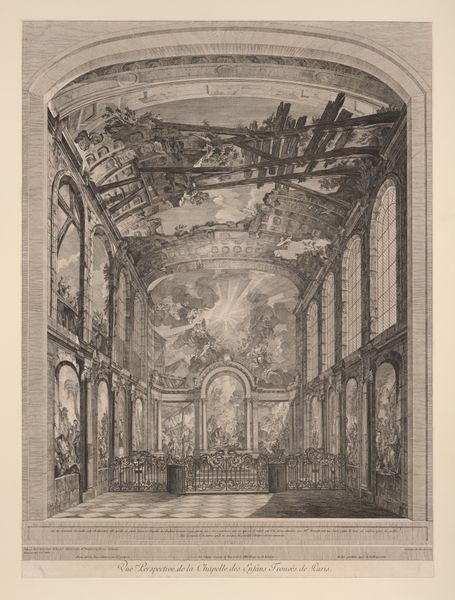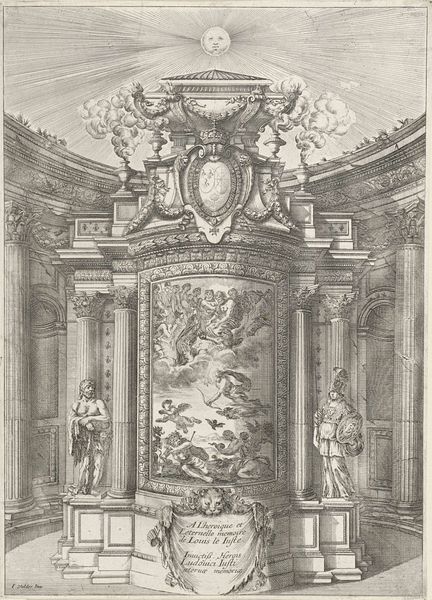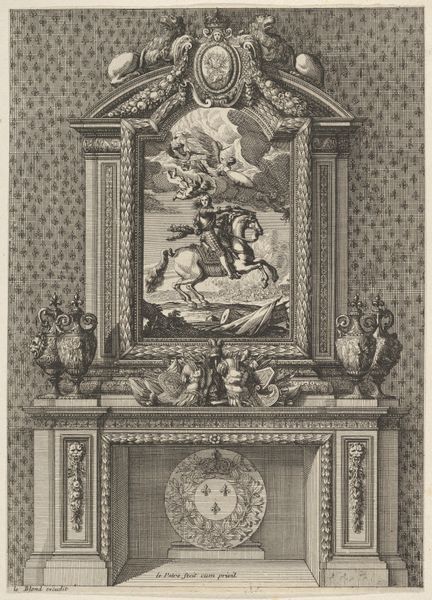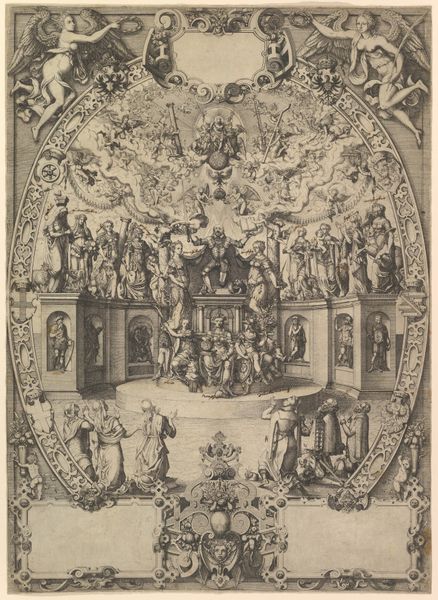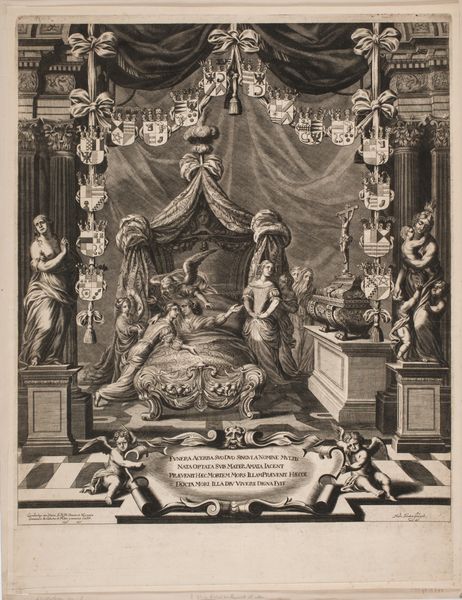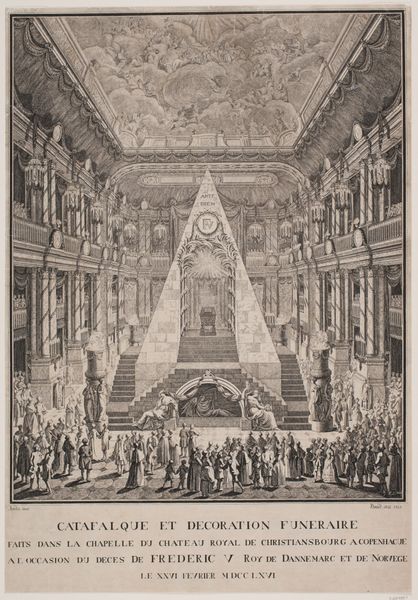
print, engraving
#
allegory
#
baroque
# print
#
form
#
line
#
history-painting
#
academic-art
#
engraving
Dimensions: height 339 mm, width 219 mm
Copyright: Rijks Museum: Open Domain
Curator: Here we have a baroque engraving from 1693 called "Apotheosis of Isis" by Sebastien Leclerc I. It's currently part of the Rijksmuseum collection. What are your immediate impressions? Editor: My goodness, it’s a bit overwhelming! All those tiny figures, the soaring architecture... it feels theatrical, almost like looking into a meticulously crafted dollhouse preparing for a grand performance. And so much fire! Curator: Yes, Leclerc excelled at portraying spatial complexity through meticulous engraving techniques. Note the contrast between the density of the crowd below and the open, ethereal space above. His process involved intricate planning and the skilled application of line, reflective of academic art of that time. Editor: Absolutely, the linear precision is astonishing. It reminds me of those optical illusions, where you keep finding new details the longer you look. It's not just representational, but feels like a fever dream meticulously etched into metal. What about the allegory? Isis feels... distant. Curator: The “Apotheosis,” or deification, alludes to both classical and contemporary power structures. In Leclerc's time, prints like these served as visual propaganda, reinforcing social hierarchies through mythological and historical narratives. Editor: Propaganda, right. Makes you wonder what material benefit Leclerc gained. Still, looking past the politics, I’m captivated by how fire, such a destructive force, becomes the purifying element leading to apotheosis. Isn't there something poetic about that transformation through intense labor and heat? Curator: Indeed. The fire’s creation demanded physical labor of the engraver to portray it, yet signifies transformative power. These allegorical prints, like luxury goods of their day, circulated among elites and reinforced social standings. The printmaking and patronage systems are crucial. Editor: Seeing all these folks staring into the flames almost like staring into television, I get this spooky feeling they are becoming absorbed by spectacle. I now want to make some work in response with AI showing digital crowds lost in social media hellscapes. Curator: An interesting connection between baroque printmaking and contemporary concerns. Editor: This has made me realize I need to re-engage with this period from my practice of art and not history. So thanks. Curator: And thanks for reminding us that, despite the historical distance, art can provoke unexpected thoughts.
Comments
No comments
Be the first to comment and join the conversation on the ultimate creative platform.
